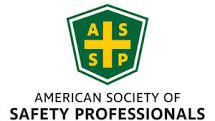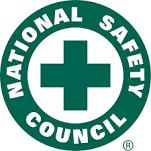OSHA Standard Changes That Will Impact Construction | FIRST, VERIFY
The U.S. Department of Labor’s (DOL) regulatory agenda for spring 2021 lists regulations the agency will focus on for the next six months, including 26 Occupational Safety and Health Administration (OSHA) regulations, six of which are in the final rule stage and the rest are in the proposed or pre-rule stage. Many of them will directly affect the construction industry.
Heat Illness Prevention
Perhaps the most consequential for the construction industry will be the standard for Heat Illness Prevention in Outdoor and Indoor Work Settings.
Heat is the number one weather-related killer and the problem has become more dangerous in recent years as global temperatures have continued to rise. Construction workers especially are at high risk, often working outside and performing exerting tasks.
Historically, OSHA has used the Occupational Safety and Health Act’s General Duty Clause, a “catch-all” for recognized hazards not addressed by a specific standard, to cite employers. That will change. If OSHA follows state standards already in place, it could mandate break times and require employers to monitor employee acclimatization, as well as outdoor temperatures and humidity levels.
Communication Tower Safety
A proposed Communication Tower Safety standard is under consideration. As technology evolves, the need for communication towers continues to grow, which likely will cause an increase in tower construction and maintenance projects in the next few years. However, these projects have had a fatality rate that has greatly exceeded that of the rest of the construction industry over the past 20 years. This standard will aim to dramatically decrease that rate as more workers enter the industry.
Enhanced Workplace Injury and Illness Tracking
Enhanced Workplace Injury and Illness Tracking is on the way. As expected under the Biden Administration, OSHA has proposed to revert to the 2016 version of the rule following a change under the previous administration in 2018. That proposed regulation includes anti-retaliation provisions that may discourage workplace safety and health incentive programs and post-incident drug testing.
If this reversion occurs, it likely signals that OSHA will view drug testing and incentive programs as a form of employer retaliation. Proposed changes would require establishments with at least 250 employees to provide electronic submissions of injury and illness data with Forms 300 and 301, in addition to the less detailed summary data currently required in Form 300A.
This could have a particular impact on larger construction sites that report more injuries and illnesses because of the sheer number of employees working at a site. It also may have an outsized impact as construction employers grapple with marijuana legalization laws and worker intoxication. Those employed in construction are almost twice as likely to have a substance abuse disorder than the general population. Construction workers also are the most likely to use opioids and cocaine of any profession and 12 percent of them have an alcohol use disorder. Reasons for these statistics may include long workdays, physical pain from labor, and stress. Regardless of the cause, substance and alcohol abuse lead to more workplace accidents and injuries. Dehydration from alcoholism also can lead to several different heat illnesses. If substance abuse trends do not change, the new regulations may end up having employers defending more citations, in addition to other legal headaches.
Hazardous Material
Hazardous Material standards addressing blood lead levels and crystalline silica is in the works. Construction workers encounter these hazards with great frequency, especially those who work with concrete, stone, and metals.
Personal Protective Equipment
OSHA is addressing Personal Protective Equipment (PPE) in Construction, although it is unclear how it will do so. A PPE standard could have an outsized impact for construction sites, especially if it addresses COVID-19 exposures for construction workers in close quarters. It also could affect the distribution of PPE normally used in the industry.
Cranes and Derricks
Amendments to the Cranes and Derricks in Construction Standard are on the table. Amendments likely will not change the application of the standard significantly, but they should help clarify and correct mistakes.
Welding and Cutting
OSHA plans to amend Welding and Cutting standards to remove ambiguity about the “confined space” definition. The original rule uses the term but failed to define it. A new definition could have an impact on many construction sites depending on the phrasing.
Other Regulations
Other regulations on the agenda that may have an impact include Shipyard Fall Protection—Scaffolds, Ladders and Other Working Surfaces, a Mechanical Power Presses update, and Walking-Working Surfaces.
Author: Courtney M. Malveaux
Source: https://www.jacksonlewis.com/publication/osha-standard-changes-will-impact-construction






